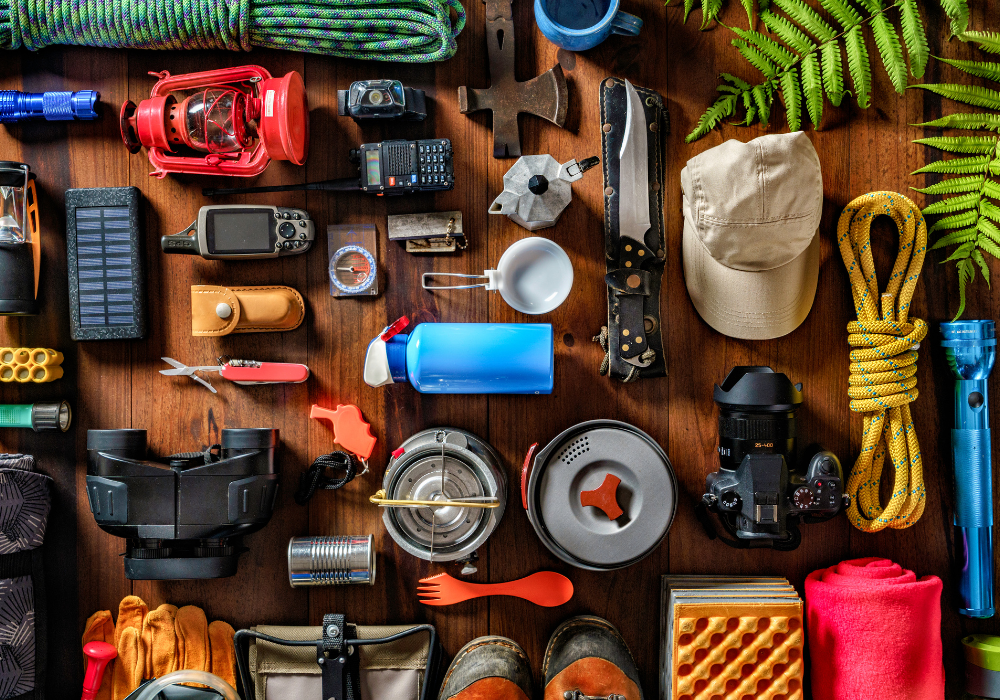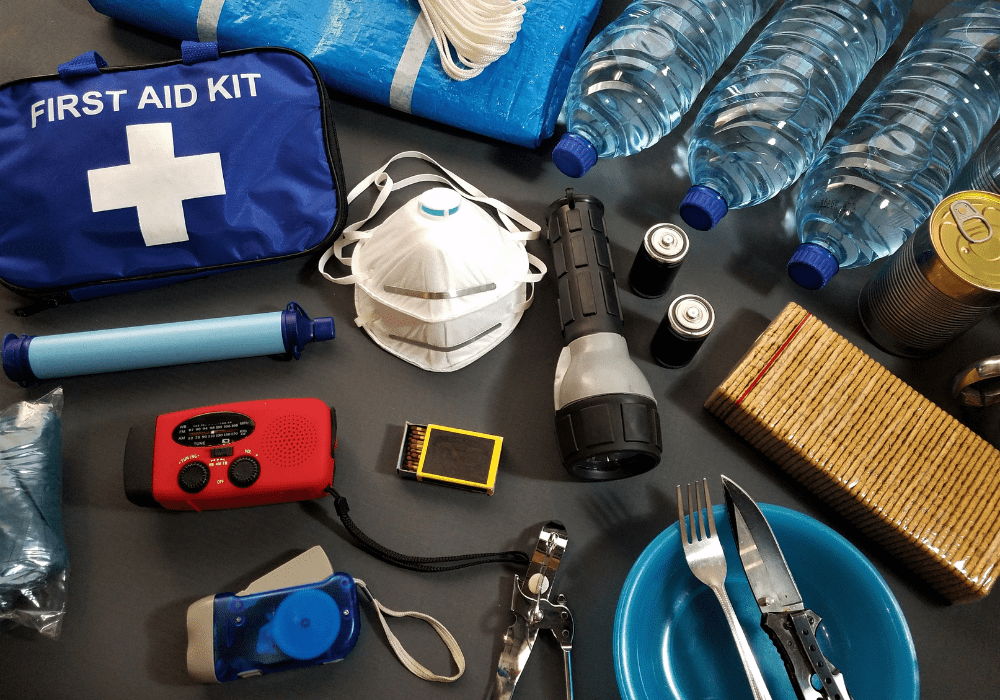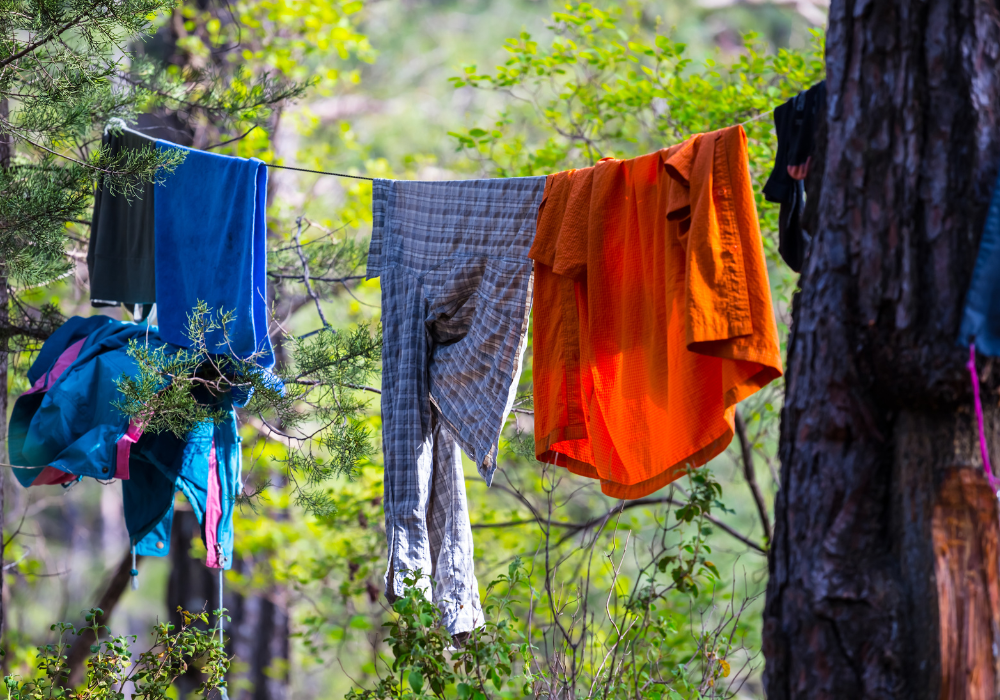
How to Make a Camping Survival Kit: A Complete Checklist
Camping is a lot of fun and teaches us useful survival skills. However, regular camping is just the tip of the iceberg. If you really want to learn how to survive in the wild, there’s no better way than survival camping.
Regular camping involves camping for 1 night or over the weekends. You usually bring enough camping gear, equipment, and supplies to help you last your entire stay at your campsite comfortably.
In survival camping, you’re staying out in the wild for several days or even weeks stuck with just your tools and some emergency supplies. The rest of what you need to survive you’ll have to gather and craft from mother nature itself. This is where you go from being a camper to becoming a survivalist.
Table of Contents
Survival Camping Checklist
Here’s what you’ll need in any survival situation:
Survive in the Wild
Surviving in the wild over a lengthy period is no small feat. You have to be ready for anything nature throws at you, including emergencies that can end your trip prematurely. Below you’ll find our list of the most crucial survival camping gear you’ll need if you plan to stay and survive in mother nature.
1. Backpack
First things first, you’ll need some way to carry all the gear on this list. Having a survival backpack not only lets you carry your gear, but it also serves as a makeshift camping pillow and floatation device, if you bought a waterproof one.
Survival backpacks come in various sizes suitable for any sized survivalist. What’s important is that your backpack is durable enough to take on rain, sun, snow, and whatever else nature throws at it.
2. Tarp or Emergency Tent
Seasoned survivalists can find and make their shelter almost anywhere they go. That said, it never hurts to bring along a tarp or emergency tent if you can. A tarp lets you build a lean-to shelter that can cover your makeshift bed of leaves and straw, and can even serve as an emergency insulation blanket.
3. Sleeping Bag or Hammock
Building a shelter shields you from the elements but you’re also going to need a bed to sleep in. While you can make your bed from leaves and straw and then cover it with your tarp, it doesn’t give much insulation and leaves you at the mercy of bugs and parasites moving along the ground.
Having an all-season sleeping bag provides much more insulation against the cold. A hammock helps you stay cool and gets you off the ground while also protecting you from flying insects thanks to its built-in netting.
4. Survival Knife
A survival knife gives you a way to cut rope, chop or make notches in wood, butcher your kill, and can even be used as a weapon.
You’ll find a lot of survival knives on the market but we suggest getting one that’s around 10-inches long (blade and handle) with a single-edged blade that comes with a double-edged triangular tip and full tang.
5. Multi-tool
A survival knife is a great tool but it can’t help you with everything. For more specialized jobs, you’ll need specialized tools. This is where a multi-tool comes in handy.
Your multi-tool should come with all the tools you think you’ll need. This will depend on your level of skill and resourcefulness. Also, make sure your multi-tool is easy to store and carry on your person at all times.
6. E-Tool
An E-tool or entrenching tool is simply a small shovel that usually comes with a triangle grip and foldable head.
It can help you dig fire and latrine pits, dig out rocks, roots, and tubers, dig holes for shelter poles, can be used as a frying pan, and even as a makeshift weapon against wild animals.
7. Compass and Map
You can’t rely on your smartphone for directions out in the wild. To avoid getting lost, you’ll need a compass and a map of the area you’re camping in.
You may want to get a heavy-duty survival compass that comes with a cover and a function that lets you estimate the number of hours left before sundown.
8. Firestarter
You’ll need some way to make a fire while at camp. You can bring a lighter or matches with you to make things easier but we suggest also having a firestarter with you at all times.
A firestarter usually consists of a magnesium flint rod and a steel “blade”. They come in many forms (even integrated into the locks of some paracord bracelets) but we suggest having a dedicated firestarter since it’s easier to use.
9. Water Filtration Device
A water bottle is a no-brainer thing to bring along with you. However, you’ll soon find that you’re running out of water, especially if you’re camping in hot and humid areas. You’ll need some way to procure water from the area around you.
This is where a water filtration straw comes in. This device comes in the form of a tube with a water filtration system packed inside. All you need to do is find the cleanest water you can then sip through the straw.
Note:
Make sure you drink through the correct end and you don’t let dirty water come into contact with that end.
10. Emergency Food
Even if you’re a proficient forager, angler, or hunter, you always have to bring emergency food for those times when you just can’t seem to catch or find anything.
Choose energy-dense, easy-to-carry items that require the least amount of cooking. Your choices can range from anything like trail mix to energy bars to dehydrated meat, fruit, and veggies.
11. Appropriate Outfit
The correct set of survival camping clothes will depend on where you’re going camping. Lightweight, breathable, and sweat-wicking clothes for hot and humid places then layers of warm, insulating, and sweat-wicking clothes for colder places.
Remember that attention to your outfit extends to your headwear and footwear as well. You wouldn’t want to get your lightweight hiking shoes all shredded by wearing them in rugged mountain terrain.
12. Headlamp
If you’re going to be camping for several nights in a place with no sources of man-made light for miles, you’re going to need a light source of your own.
A lantern will do but if you want to keep both hands free while walking in the dark, then a headlamp is your best choice.
13. Paracord and Duct Tape
Paracord and duct tape are a survivalist’s best friends.
Paracord can help you from drowning in water or quicksand, avoid falling into a ravine, can be used as cordage to bind your shelter together, and can even be used as a string for your fishing pole.
Duct tape can let you easily and quickly repair holes in your tarp or tears in your clothes. You can use it to make an arm sling or to bind a splint. You can even use it as an emergency bandage.
Both materials have lots more uses and can be easily stored and carried in your backpack or your person.
14. First Aid Kit
No matter how well you prepare and how familiar you are with nature, you should always have a first aid kit ready. This kit helps you minimize the chances of minor cuts, scrapes, and niggles becoming major trip-ending ones.
15. GPS Tracker
No matter how hardcore of a survivalist you become, you should always think about your safety. This is why it’s always recommended to inform loved ones, friends, and park rangers of your plans before and during your trip. Then, as a final precaution, carry a GPS tracker on your person at all times to help authorities find you in case you need rescuing.





Pingback: Master the Art of Wilderness Survival: The Ultimate Survivalist Camping Checklist - SurvivalCamping.net
Pingback: 10 Greatest Backpacking Trails In North America - AdventureHacks
Pingback: 10 Pieces of Survival Gear Every Adventurer Needs In Their Pack - AdventureHacks
Pingback: praisebe